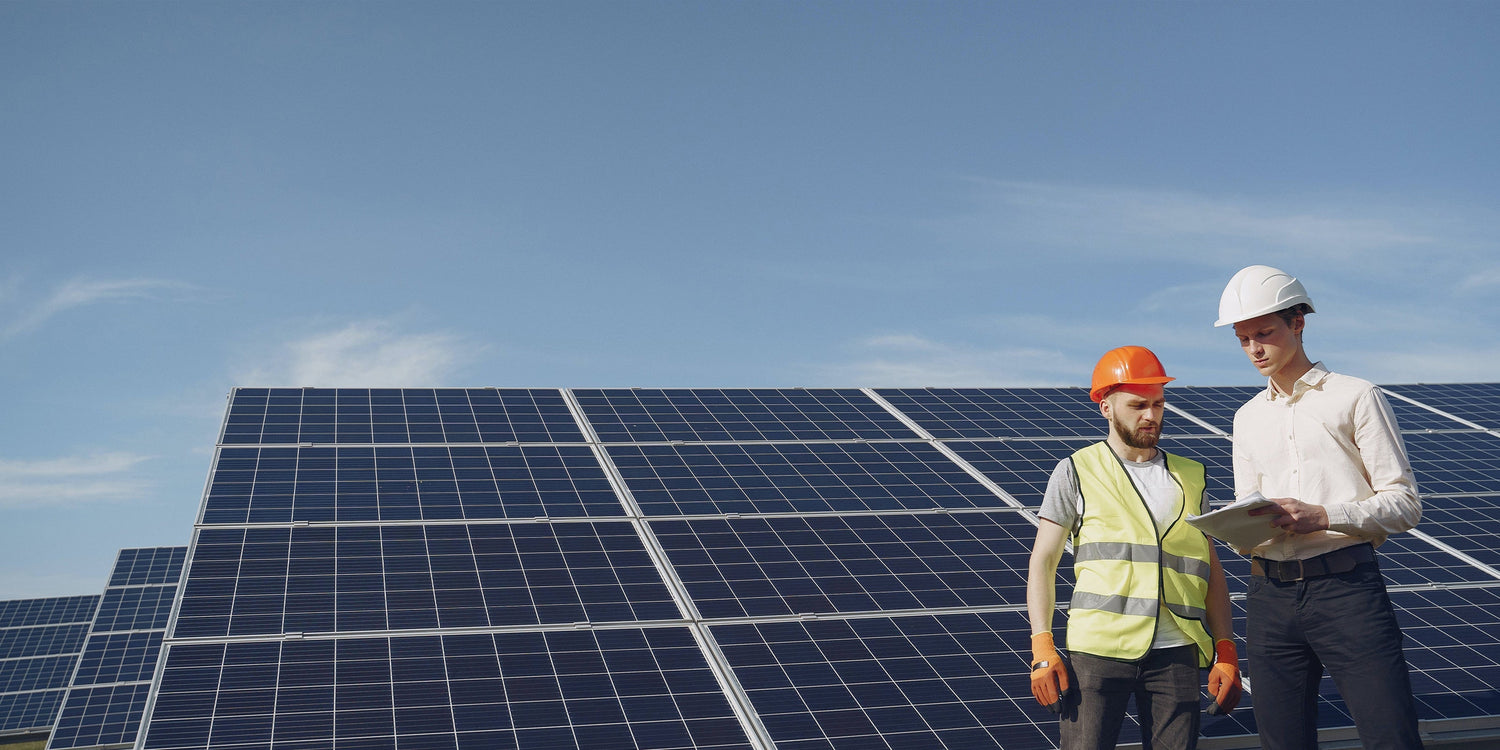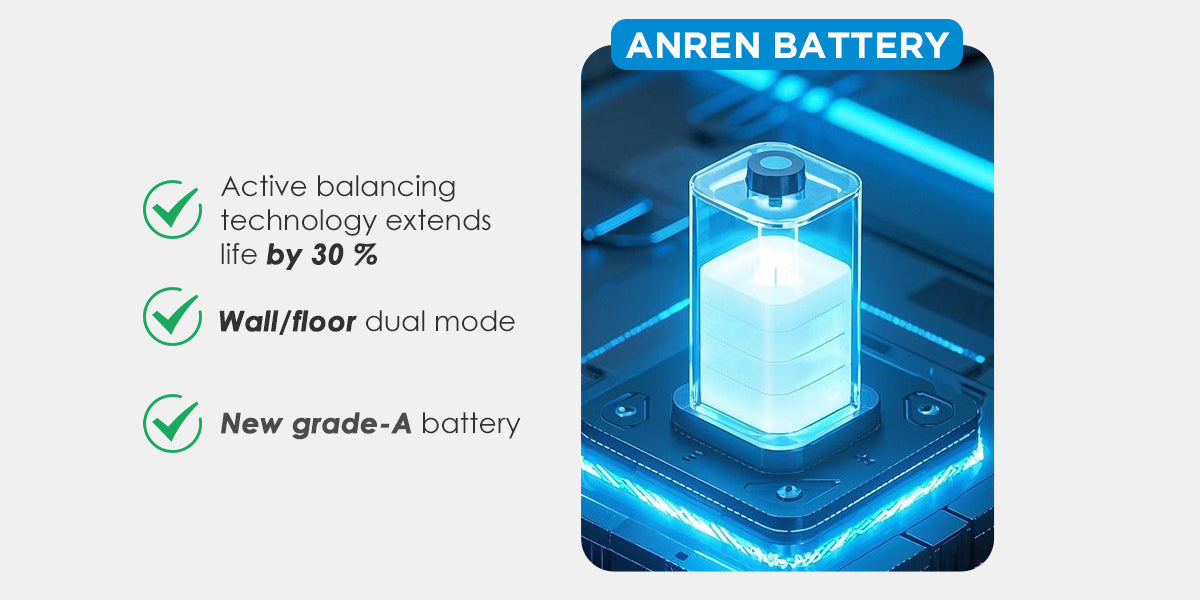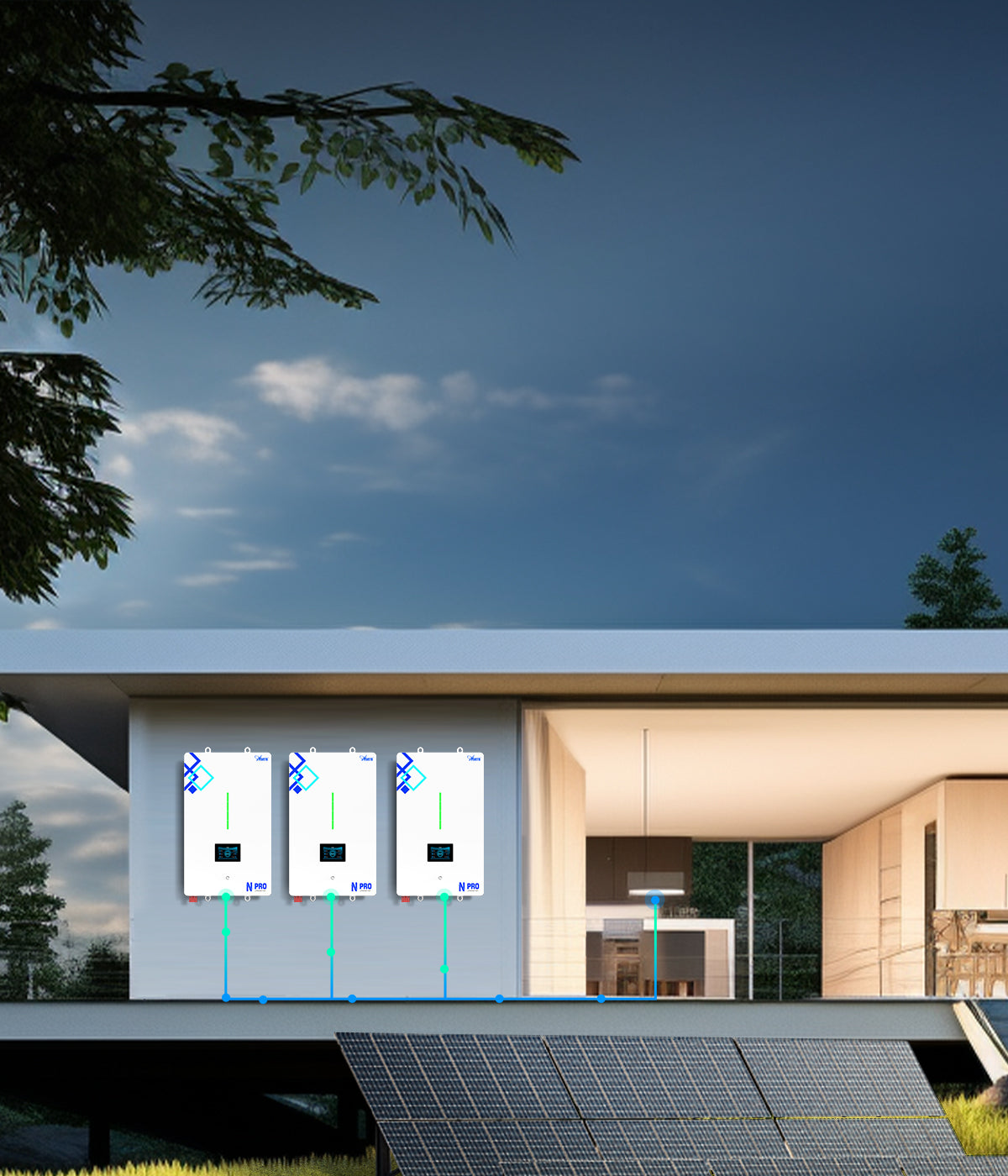Imagine a life where your electricity comes directly from the sun, freeing you from utility bills and power outages. This is the promise of off-grid solar systems. They offer a path to true energy independence, providing reliable power wherever you are. Whether for a remote cabin, a farm, or a desire for a self-sufficient home, off-grid solar empowers you to control your energy future.
The global shift towards renewable energy is accelerating. In 2023, renewable energy sources accounted for 86% of all new power capacity additions worldwide, with solar energy leading this growth. Specifically, photovoltaic (PV) solar energy saw a record increase, adding 345.5 GW in 2023. This trend highlights solar power's increasing role in meeting global energy demands.
This guide provides a comprehensive overview of off-grid solar systems. We will discuss their core components, significant benefits, and the steps involved in setting one up. We will also explore advanced considerations and how to maintain your system for lasting performance. Our goal is to equip you with the knowledge needed to embrace a life powered by the sun.
Understanding Off-Grid Solar Systems
An off-grid solar system operates entirely independently of the public electricity grid. This means it generates, stores, and distributes its own power. Unlike grid-tied systems, which can send excess power back to the utility, off-grid setups require robust energy storage to ensure a continuous supply of electricity, especially during periods without sunlight.
Key Components of an Off-Grid Solar System
- Solar Panels: These convert sunlight into direct current (DC) electricity. The number and type of panels depend on your energy needs and available sunlight.
- Charge Controller: This device regulates the voltage and current from the solar panels to the battery bank. It prevents overcharging and prolongs battery life.
- Battery Bank: This stores the electricity generated by the solar panels. It is crucial for providing power during the night or on cloudy days. ANERN specializes in high-performance, safe, and reliable Lithium Iron Phosphate (LiFePO4) batteries, which are ideal for deep-cycle applications in off-grid systems.
- Inverter: An inverter converts the DC electricity from the battery bank into alternating current (AC) electricity. This is the type of power most household appliances use. ANERN offers advanced solar inverters designed for optimal performance in off-grid solutions. Choosing the Right Solar Inverter for Your Off-Grid System
- Backup Generator (Optional): For extended periods of low sunlight or exceptionally high demand, a backup generator can provide additional power to charge the batteries or directly supply loads.
Benefits of Going Off-Grid
Choosing an off-grid solar system offers a range of compelling advantages:
- Energy Independence: You gain complete autonomy over your power supply. This eliminates reliance on a centralized grid and protects you from power outages, blackouts, and rising electricity costs. Achieve Energy Independence with an Off-Grid Solar System
- Cost Savings: While the initial investment exists, an off-grid system eliminates monthly utility bills. Over its lifespan, this can lead to significant financial savings.
- Environmental Impact: Solar energy is a clean, renewable resource. By using an off-grid system, you reduce your carbon footprint and contribute to a healthier planet.
- Location Flexibility: Off-grid systems are perfect for remote locations where grid extension is costly or impossible, such as cabins, farms, or tiny homes.
- Increased Resilience: Your power supply remains unaffected by grid failures, natural disasters, or other external disruptions.
Designing Your Off-Grid Solar System
Effective design is critical for an efficient and reliable off-grid solar system. Careful planning ensures your system meets your energy demands consistently.
Assessing Your Energy Needs
The first step in designing your system is to calculate your daily energy consumption. List all appliances and devices you plan to power, their wattage, and how many hours per day each will operate. This creates your "load profile."
For example, a typical off-grid home might have the following daily energy consumption:
| Appliance | Wattage (W) | Hours Used/Day | Daily Watt-hours (Wh) |
|---|---|---|---|
| Refrigerator | 100 | 24 | 2400 |
| LED Lights (5) | 9 (each) | 5 | 225 |
| Laptop | 50 | 4 | 200 |
| Water Pump | 500 | 0.5 | 250 |
| Total Daily Energy Consumption: | 3075 Wh | ||
This total daily watt-hour (Wh) figure guides the sizing of your solar panels and battery bank. Your Complete Guide to Off-Grid Solar System Sizing
Sizing Solar Panels and Battery Banks
Once you have your energy consumption, you can determine the required solar panel array size and battery capacity.
- Solar Panel Sizing: Consider your peak sun hours (PSH) – the average number of hours per day when sunlight is strong enough to generate maximum power. Divide your total daily Wh by your PSH to estimate the necessary solar panel wattage. For instance, if you need 3075 Wh daily and have 5 PSH, you would need approximately a 615 W solar array (3075 Wh / 5 PSH = 615 W). It is wise to add a buffer for cloudy days or seasonal variations.
- Battery Bank Sizing: The battery bank stores your energy. Its capacity is measured in amp-hours (Ah) or kilowatt-hours (kWh). You need enough capacity to cover your energy needs for several days without sun (autonomy days). For a 3075 Wh daily need and 3 days of autonomy, you would require approximately 9225 Wh (3075 Wh * 3 days). Divide this by your system voltage (e.g., 12V, 24V, 48V) to get the Ah rating. For a 48V system, that would be roughly 192 Ah (9225 Wh / 48V).
ANERN's LiFePO4 batteries are an excellent choice for off-grid battery banks. They offer a significantly longer cycle life compared to traditional lead-acid batteries, often lasting 3 to 10 times longer. LiFePO4 batteries can handle deeper discharges without damage, typically down to 20% charge, while lead-acid batteries often lose capacity if discharged below 50%. This translates to more usable energy from a smaller battery bank and a longer lifespan, making them a more cost-effective solution over time, despite a higher upfront cost.
Choosing the Right Inverter
The inverter is the bridge between your DC battery power and your AC appliances. Select an inverter with a continuous power rating that exceeds the total wattage of all appliances you might run simultaneously. Look for pure sine wave inverters for sensitive electronics, as they produce cleaner power. ANERN offers hybrid inverters that integrate the functions of a solar charge controller and an inverter, simplifying your system and enhancing efficiency. Choosing the Right Solar Inverter for Your Off-Grid System
Installation and Setup
Installing an off-grid solar system involves several critical steps. While some aspects can be DIY, professional guidance is often recommended, especially for wiring and safety.
Site Selection and Panel Mounting
Choose a location for your solar panels that receives maximum unobstructed sunlight throughout the day, year-round. South-facing (in the Northern Hemisphere) or north-facing (in the Southern Hemisphere) roofs or ground mounts are common. Consider the tilt angle for optimal seasonal performance. Ensure the mounting structure is secure and can withstand local weather conditions.
Wiring and Connections
Proper wiring is paramount for safety and efficiency. This includes connecting solar panels to the charge controller, the charge controller to the battery bank, and the battery bank to the inverter. Use appropriately sized wires and fuses for each circuit to prevent overheating and ensure efficient power transfer. Adhere to all electrical codes and safety standards. Install Your Off-Grid System: A Professional Guide
System Testing and Commissioning
Once installation is complete, test each component and the system as a whole. Verify correct voltage and current readings at various points. Monitor battery charging and discharging cycles. This ensures everything operates as intended before relying on the system for daily power. Switch to Off-Grid Solar: A Step-by-Step Checklist
Maintenance and Optimization
Regular maintenance ensures your off-grid solar system performs optimally and lasts for many years. Optimization techniques can further enhance its efficiency.
Routine Maintenance Tasks
- Panel Cleaning: Keep solar panels free of dirt, dust, snow, and debris. Clean them periodically with water and a soft brush to maximize sunlight absorption.
- Battery Health Checks: For LiFePO4 batteries, minimal maintenance is required. However, regularly check connections for corrosion and ensure proper ventilation. ANERN's LiFePO4 batteries are designed for long-term, maintenance-free operation.
- Wiring Inspections: Periodically inspect all wiring and connections for wear, damage, or loose terminals. Tighten any loose connections.
- Inverter Monitoring: Check your inverter's display for any error codes or warnings. Many modern inverters offer monitoring apps for easy performance tracking.
Optimizing System Performance
- Energy Conservation: The most effective way to optimize your system is to reduce your energy consumption. Use energy-efficient appliances and adopt mindful habits to lower your overall load.
- Seasonal Adjustments: If using adjustable mounts, change the tilt angle of your solar panels seasonally to capture more sunlight as the sun's path changes.
- System Monitoring: Utilize monitoring tools to track energy production, consumption, and battery state of charge. This data helps you understand your system's performance and identify areas for improvement.
Advanced Off-Grid Considerations
For those looking to enhance their off-grid experience, several advanced considerations can provide greater reliability and functionality.
Hybrid Off-Grid Systems
A hybrid off-grid system combines solar power with another energy source, such as wind turbines or a generator. This provides redundancy and ensures power availability even during prolonged periods of low solar irradiance. For example, wind power can be effective during cloudy, windy conditions when solar output is low.
Integrating with Home Energy Management
Modern off-grid systems can integrate with smart home technologies for advanced energy management. This allows you to prioritize loads, automate appliance usage, and optimize energy flow based on real-time production and consumption data. This level of control maximizes efficiency and comfort.
ANERN's Integrated Solutions
ANERN offers integrated ESS (Energy Storage System) solutions that combine LiFePO4 batteries, hybrid inverters, and solar panels into a cohesive unit. These systems simplify installation and provide a robust, all-in-one solution for off-grid living. Our extensive experience in the solar industry allows us to deliver reliable and scalable energy solutions designed for true energy independence. The Ultimate Guide to Off-Grid Solar Power Systems
The Path to Energy Independence
The journey to energy independence with an off-grid solar system is a significant step towards a sustainable and resilient lifestyle. Global renewable energy capacity continues to grow at a record pace, with solar photovoltaics leading the way. In 2024, renewable energy sources accounted for over 90% of total global energy capacity expansion. While there are regional disparities, the overall trend points to a future powered by clean energy.
By understanding the components, carefully planning your system, and performing regular maintenance, you can create a reliable and efficient power source that serves your needs for decades. ANERN is committed to providing the high-quality lithium batteries, solar inverters, and integrated off-grid solar solutions that empower individuals and communities to achieve their energy independence goals. Embrace the power of the sun and take control of your energy future.





Leave a comment
All comments are moderated before being published.
This site is protected by hCaptcha and the hCaptcha Privacy Policy and Terms of Service apply.